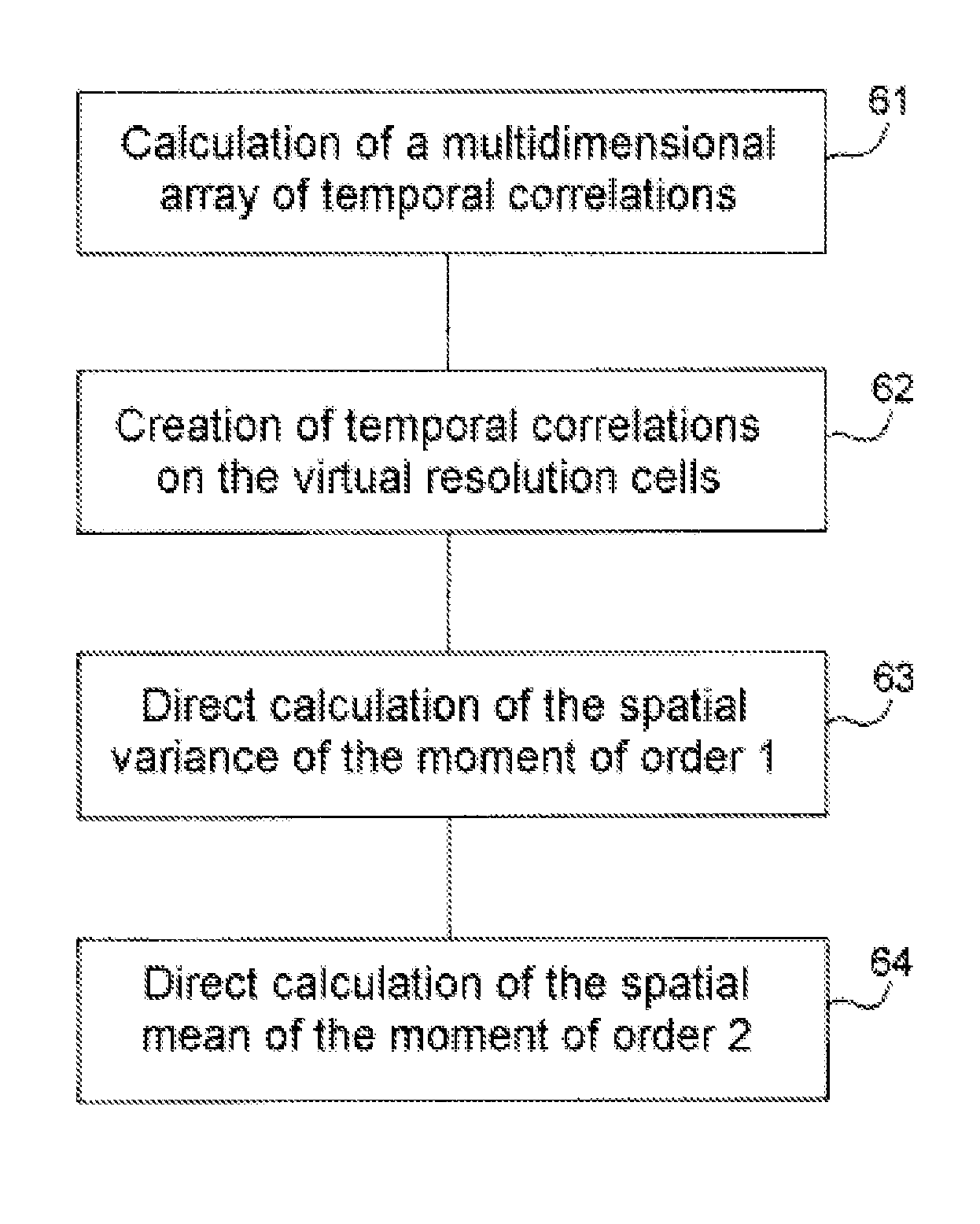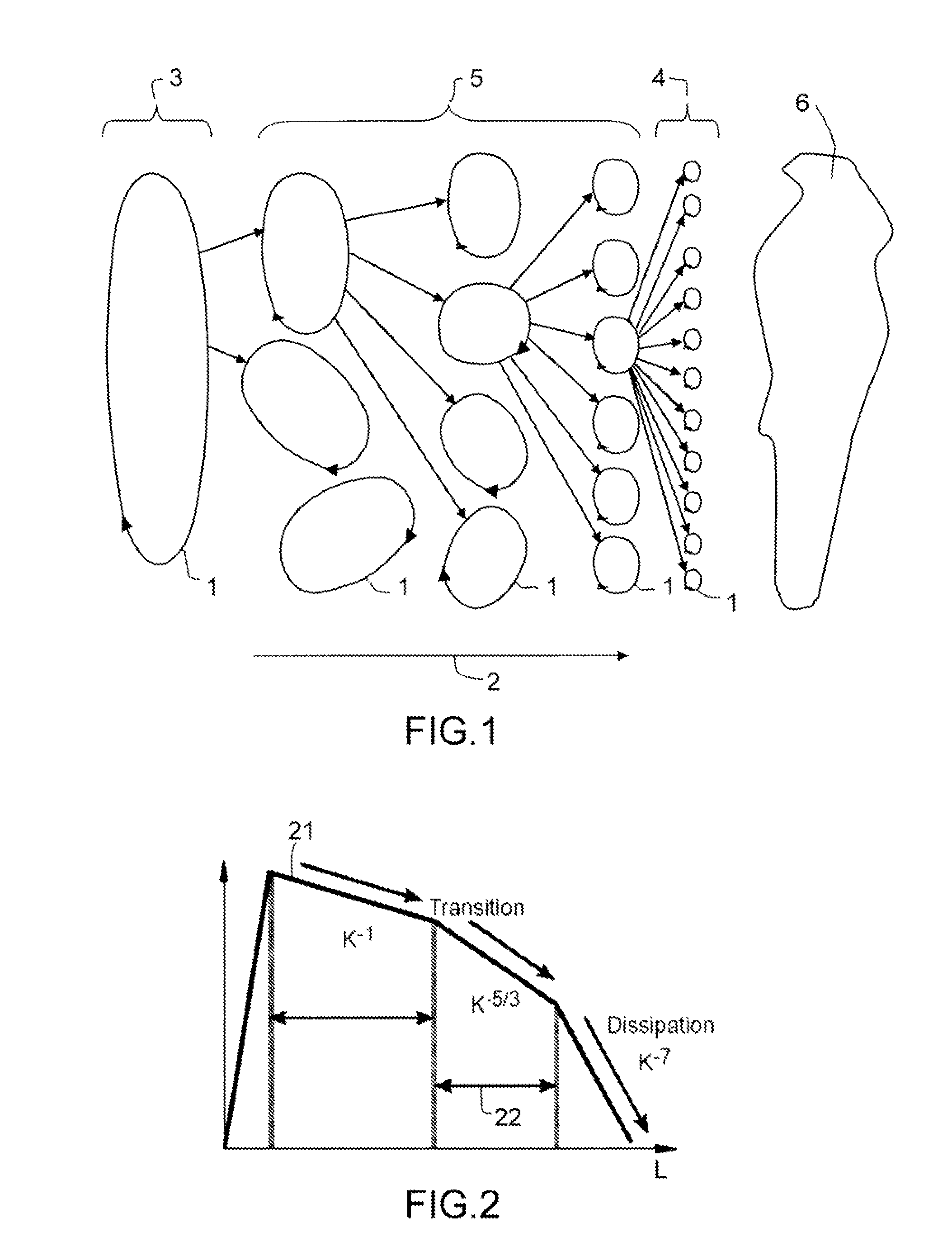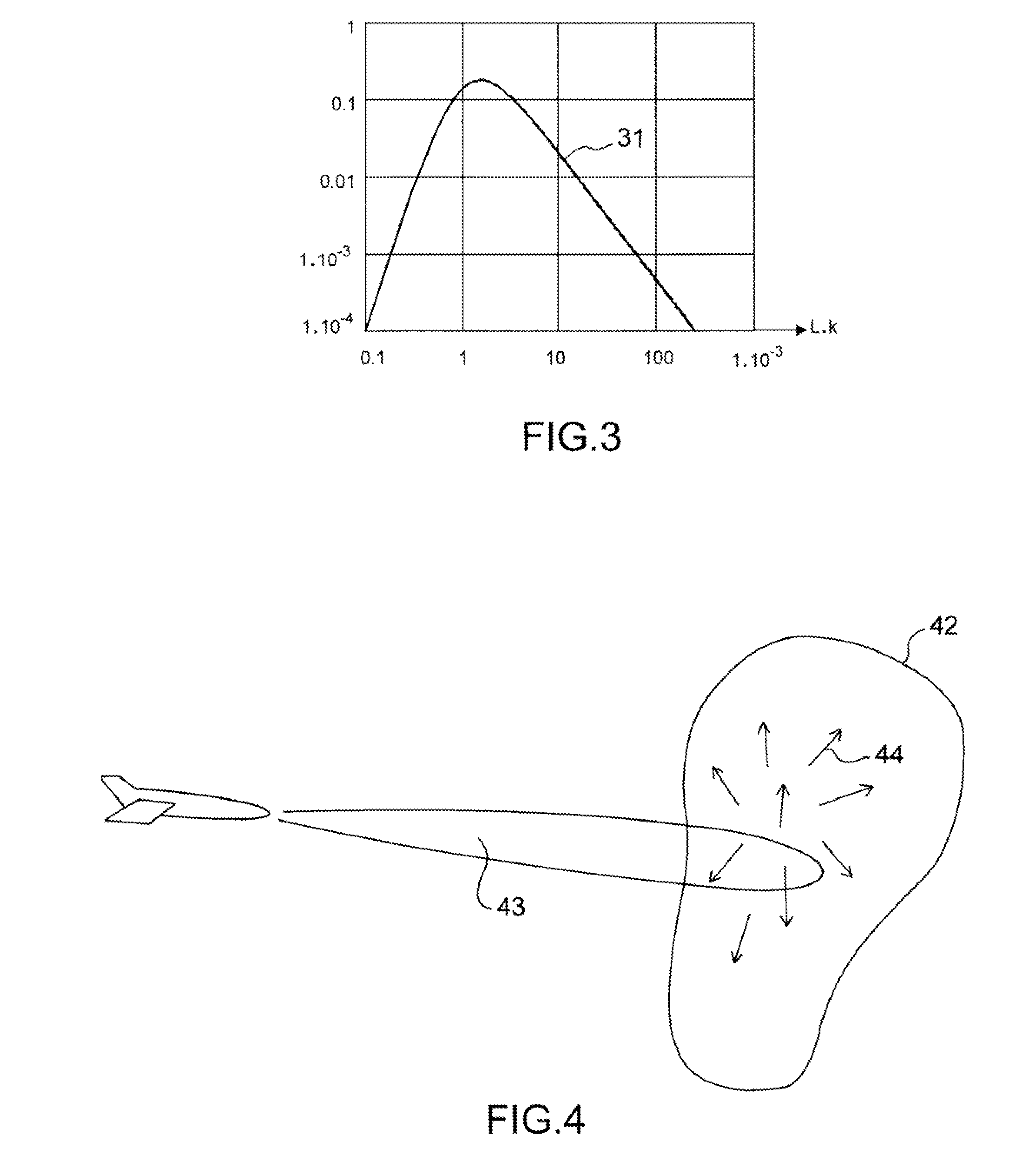Method for characterizing an atmospheric turbulence using representative parameters measured by radar
a technology of representative parameters and atmospheric turbulence, which is applied in the direction of instruments, measurement devices, climate sustainability, etc., can solve the problems of aircraft carriage constraints, hydrometers are usable, and the variance of wind field velocity is not alone sufficient to measure the degree of severity
- Summary
- Abstract
- Description
- Claims
- Application Information
AI Technical Summary
Benefits of technology
Problems solved by technology
Method used
Image
Examples
Embodiment Construction
[0022]FIG. 1 illustrates the mechanism of atmospheric turbulence, more particularly the mechanism of injection, cascade and progressive dissipation of turbulent energy. A turbulent phenomenon is characterized by the presence of velocity swirls 1 within the fluid, of various scales, and the progressive degradation over time 2 from large-scale phenomena 3 to small-scale phenomena 4, and then their disappearance through thermal dissipation.
[0023]If at an instant t a swirling motion 1, 3 of kinetic energy E per unit mass, for example due to a convection phenomenon, is initiated at a large scale L1, termed the injection scale:[0024]initially, this swirling motion 1 of energy E degrades progressively into swirling motions 5, 4 of smaller scales with conservation of kinetic energy;[0025]when the swirling motion 1, 4 has attained a small scale L2 such that the associated Reynolds number corresponds to a viscous phenomenon which is predominant in relation to the inertial phenomena, the swirl...
PUM
 Login to View More
Login to View More Abstract
Description
Claims
Application Information
 Login to View More
Login to View More - R&D
- Intellectual Property
- Life Sciences
- Materials
- Tech Scout
- Unparalleled Data Quality
- Higher Quality Content
- 60% Fewer Hallucinations
Browse by: Latest US Patents, China's latest patents, Technical Efficacy Thesaurus, Application Domain, Technology Topic, Popular Technical Reports.
© 2025 PatSnap. All rights reserved.Legal|Privacy policy|Modern Slavery Act Transparency Statement|Sitemap|About US| Contact US: help@patsnap.com



